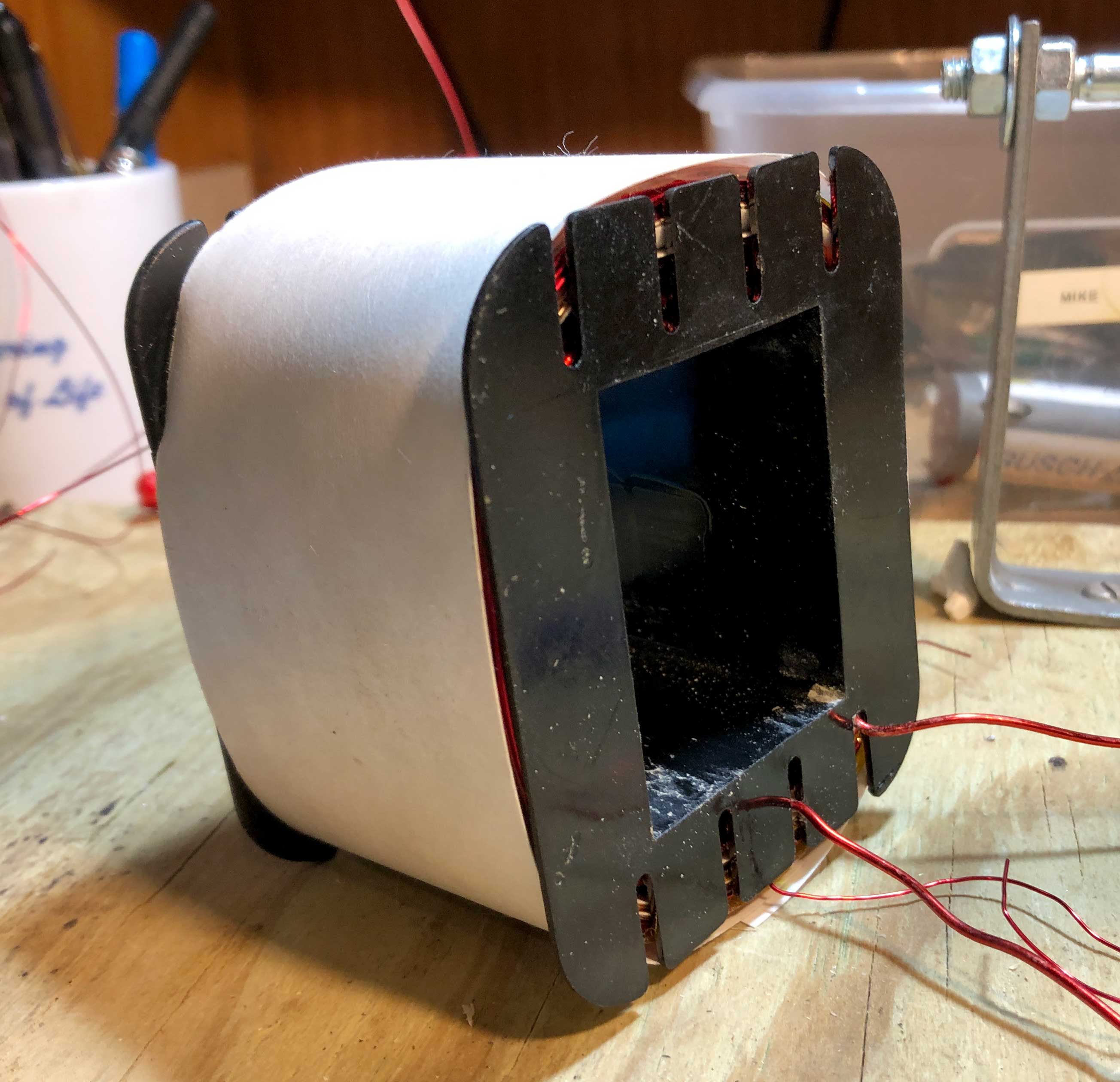
This is my first homebrew transformer. It was designed as a 300W transformer, so must be carefully designed. It can be used for a large power amplifier using either 8 KT-90's or 4 13E1 power tubes.
I took all my reading on transformer design and condensed it into an EXCEL spreadsheet. The basic input info is shown here. I have made the maximum flux density B = 1.35 which will definitely require high-quality iron.
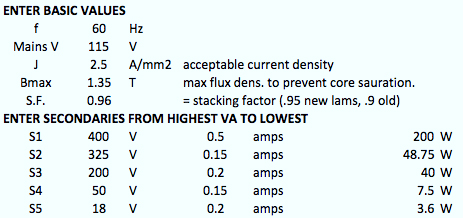
There are a lot of secondary windings. As a completely newbie, unskilled transformer winder, there is a possibility that I won't be able to fit all of them on my transformer. Oh, well, I can make a separate smaller one that also includes the 6.3V heater windings.
Here are the results from the spreadsheet. I am using laminations with a center-leg-width of 1.5" and a stack height of 2". The calculations give a TPV (turns-per-volt) of 1.50.

For example, the primary winding needs 115 * 1.5 = 172 turns.
This is the primary winding. It is 5 layers of very-stiff, very hard to wind 16AWG wire. Note that there are 172 turns as called for by the handy-dandy spreadsheet. This was turned very carefully and one can see that there is not much room for all the other windings.
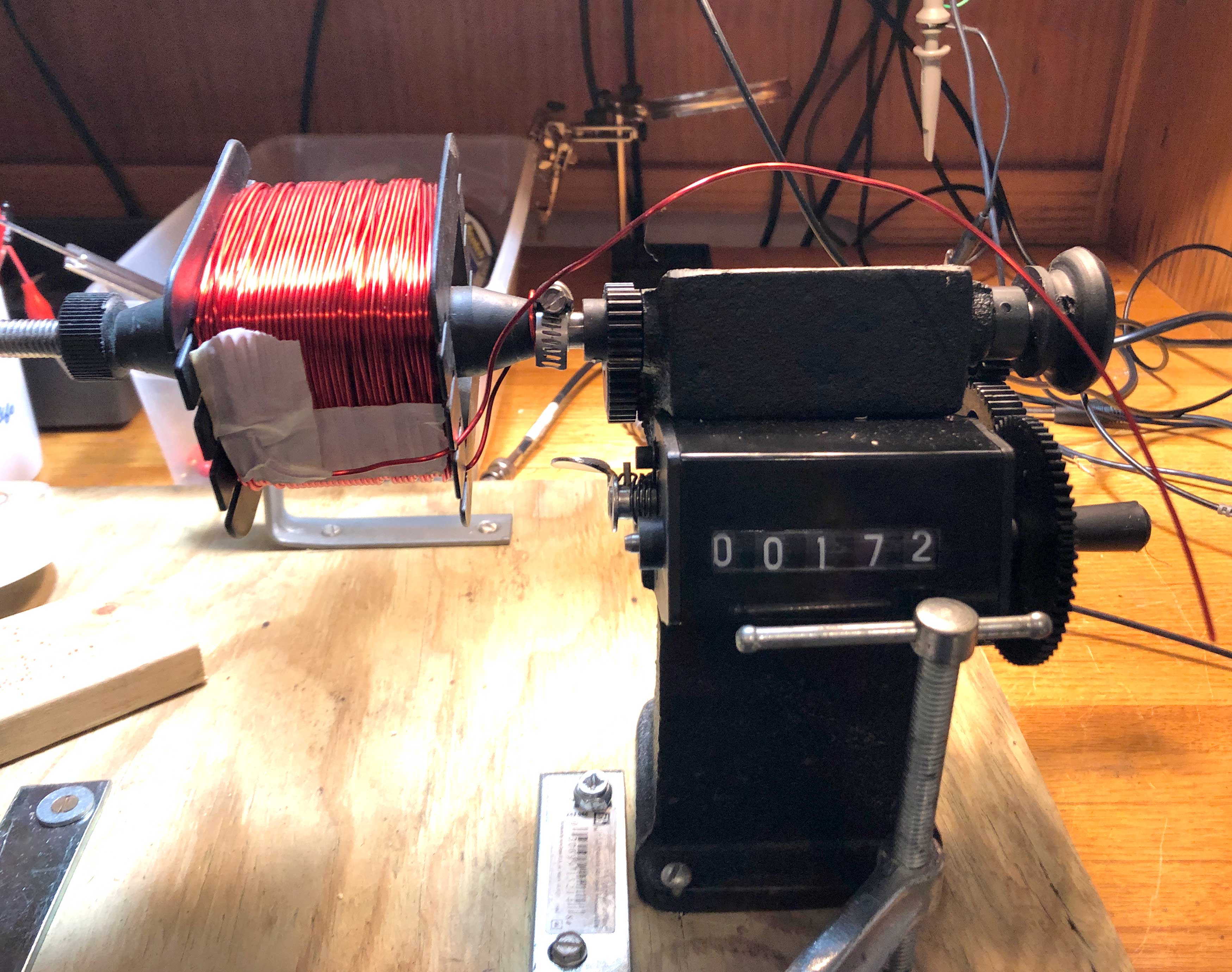
After a few turns of kapton tape and a layer of presspaper, the ES shield was applied. This is simply a single layer of carefully wound 28ga wire. One end will be unused, and the other end will go to ground.
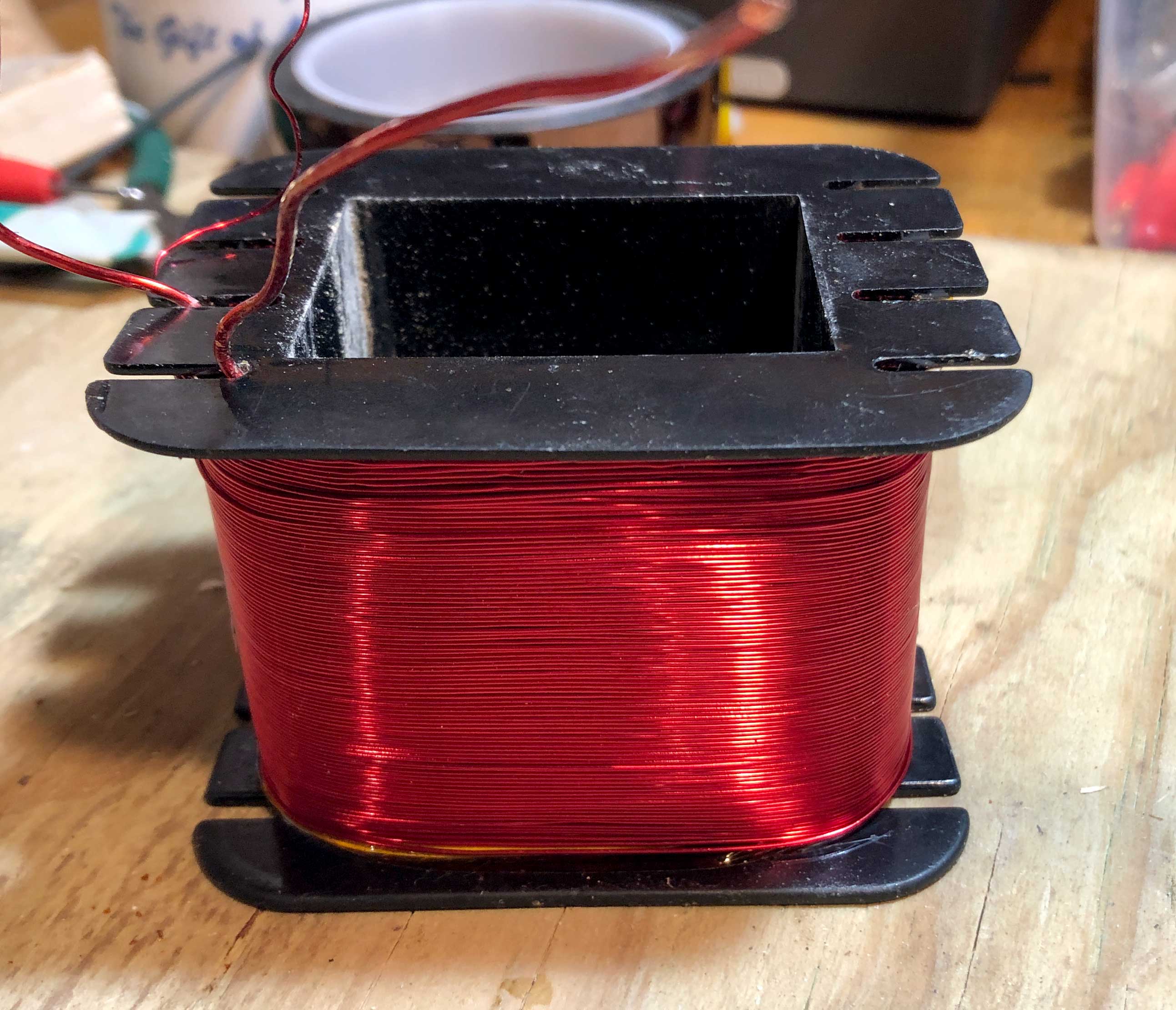
After some more kapton tape and another layer of presspaper, I'm ready to start winding the secondary windings.
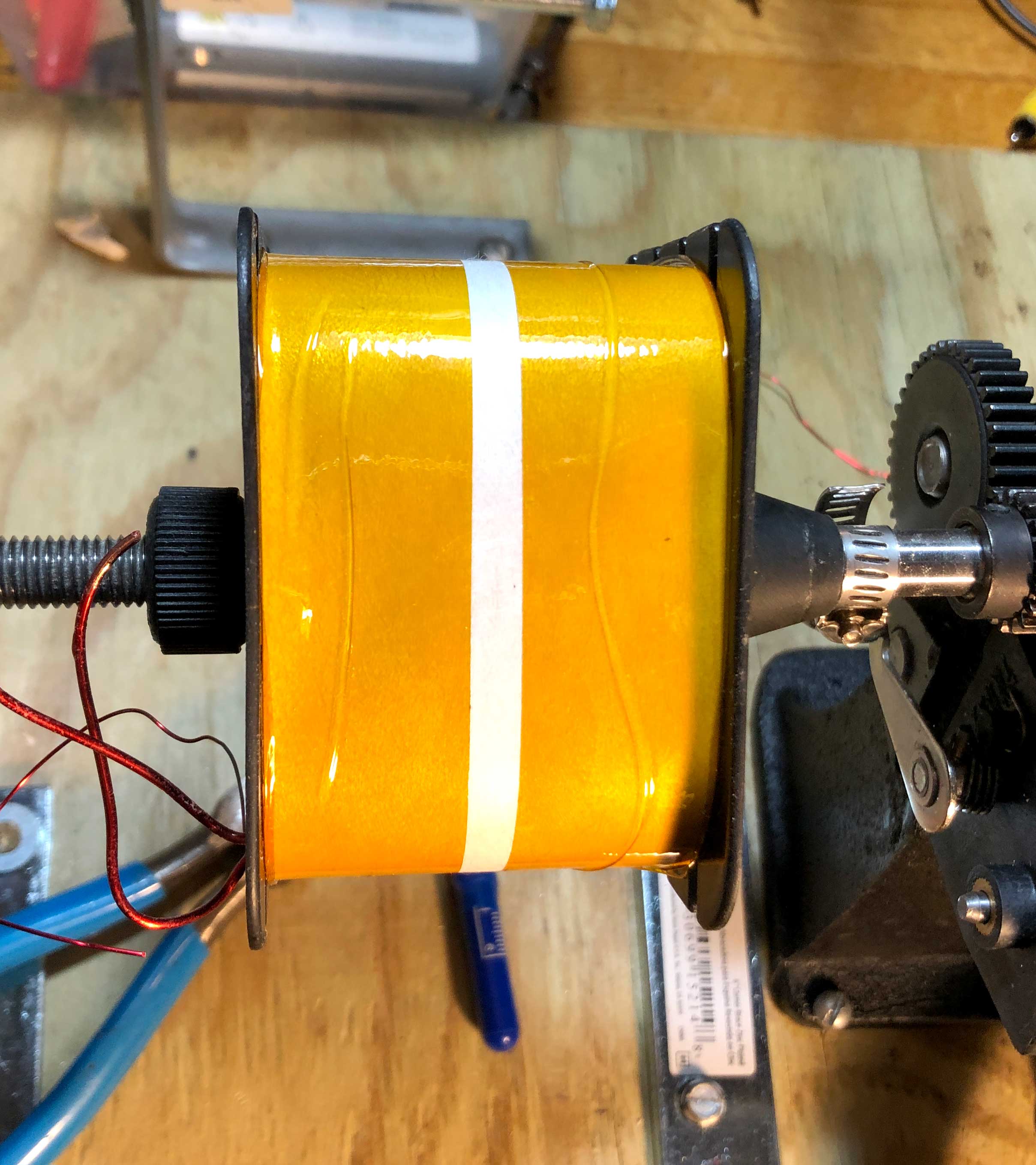
Hahahahahaha!!! After winding just the first secondary, I am out of room. I'm done. The bad news is that I have to make another transformer to get all the other secondaries. The good news is that this was designed as a 300W transformer, but will only be a 200W transformer, so it should run VERY COOL, and hopefully not rattle or hum. Next step, soak in electrical varnish.
